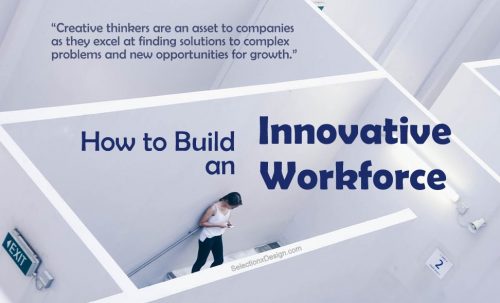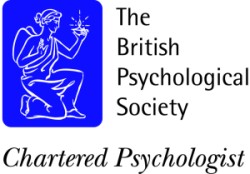The benefits of creativity at work – Why build an innovative workforce?
The value of creativity and an innovative workforce has been increasingly recognised in recent years. Companies need to work harder to stay competitive, and to gain the confidence of more demanding consumers. Creative thinkers are an asset to companies as they excel at finding solutions to complex problems and new opportunities for growth. Compared to workers who simply do work they’re expected to do, creative employees are more proactive, show more commitment and tend to exceed expectations. They take a broader approach than analytical thinkers which can lead to new solutions. They’re more flexible, too, responding well to change. All of this may contribute to workplace success throughout an organisation.
What exactly is creativity, and how does it relate to innovation?
Creativity refers to the potential to generate novel, original ideas. Innovation involves applying a new idea within a relevant situation or content. These terms are often used interchangeably, although innovation implies a more direct impact on work processes.
Researchers have alternated between considering creativity as an intellectual ability and a personality trait. Early work included Guilford’s (1950) study of creativity as a divergent thinking. Sternberg’s investment theory of creativity (e.g., Sternberg & Lubart’s 1991) proposed influences including intellectual ability, knowledge, thinking styles, personality characteristics, intrinsic motivation and the environmental. The association between intelligence and creativity has been extensively researched, but with varying results. Recent evidence suggests that whether individual creativity is related to intellect or personality depends on how it is conceptualized and assessed (Candler et al., 2016). Creativity is positively associated with the “Big 5” dimension of openness to experience (McCrea, 1987). Persons who are extraverted or low on conscientiousness may be more innovative. Motives (e.g., intrinsic, vs. extrinsic), mood, values, or emotional intelligence may also promote innovation; further research is needed (Arnold & Randall et al., 2016). There is a great deal yet to discover about creativity at work.
Fostering creativity and innovation at work
So, how can organisations take advantage of the benefits of creativity in the workplace?
Selecting and hiring employees with the potential for innovation may be a good first step. Psychometric tests that include measurement of creative or innovative potential include the 16pf® (Receptivity, vs. Tough-mindedness), measures of the “Big 5” (Openness to Experience), and strengths-based measures of personality such as the Values in Action (VIA) Survey of Character Strengths (Peterson, C., & Seligman, M.E.P, 2004).
The Innovation Potential Indicator (Patterson, 1999) specifically measures an employee’s potential to apply innovative ideas in the workplace. You may access and use this instrument once you have completed Selection by Design’s Test User: Occupational, Personality training.
Selection processes might further include situational judgement tests (SJTs) designed to evaluate creativity for specific job tasks. Interview questions might include demonstration of past innovative ideas or approaches.
Selecting employees with the right potential may help in developing a more innovative workforce. But it is also essential that innovation is valued, encouraged and supported throughout the organisation. Creating a culture centred on creativity, with leaders who will support innovation and reward flexibility is key.
References:
Arnold, J., & Randall R, et al. (2016). Work psychology: Understanding human behaviour in the workplace (6th ed.). Harlow, England: Pearson.
Kandler, C., Riemann, R., Angleitner, A., Spinath, F.M., Borkenau, P., & Penke L. (2016). The nature of creativity: The roles of genetic factors, personality traits, cognitive abilities, and environmental sources. Journal of Personality and Social Psychology, 111(2), 230 –249.
Guilford, J.P. (1950). Creativity. American Psychologist, 5(9), 444–454.
McCrae, R.R. (1987). Creativity, divergent thinking, and openness to experience. Journal of Personality and Social Psychology, 52(6), 1258-1265.
Patterson, F. (1999). The innovation potential indicator. Manual and User’s guide. Oxford: OPP Ltd.
Peterson, Christopher & Seligman, M.E.P. (2004). Character strengths and virtues: A handbook and classification. Washington, D.C.: APA Press and Oxford University Press.
Sternberg, R.J., & Lubart, T.I. (1991). An investment theory of creativity and its development. Human Development, 34(1), 1–31.


